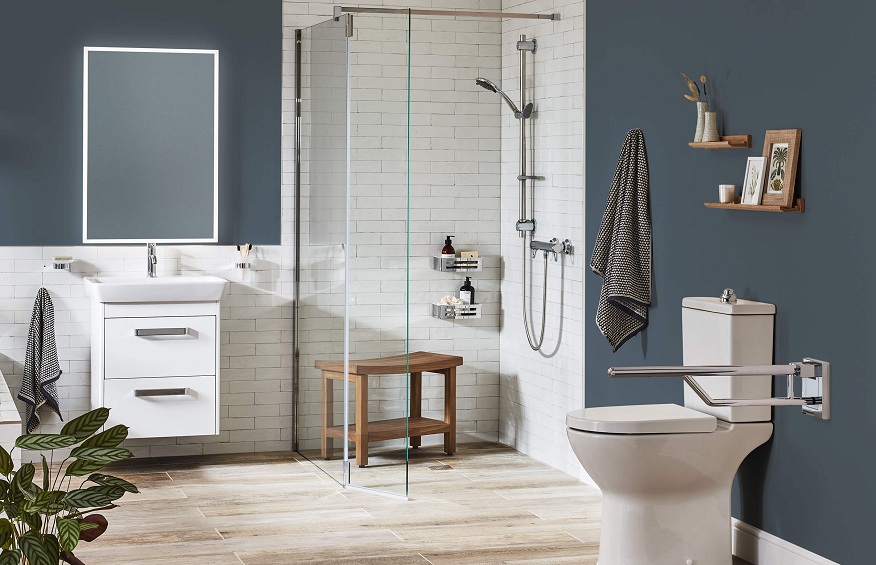Creating accessible spaces becomes preeminent, especially for individuals with disabilities or limited mobility. A crucial area to address is the bathroom, where thoughtful modifications can make a significant impact on daily living. In this article, we will dig into five key modifications that can transform your home into a more accessible and welcoming environment, focusing on the disabled bath.
Mobility Inclusive Showers
One of the central modifications to consider in creating an accessible bathroom is the installation of a walk-in shower. This design eliminates barriers, making entry and exit seamless for wheelchair users. The key feature is the curbless design, allowing wheelchairs to roll in effortlessly. Additionally, ensuring ample space within the shower area enhances manoeuvrability, contributing to a more independent bathing experience. This modification addresses practical needs and fosters a sense of autonomy, empowering individuals with disabilities to navigate their personal spaces with ease.
Safety Oriented Bathtubs
For those who prefer a bathtub experience, the walk-in bathtub emerges as a game changer in accessible bathroom design. Featuring a door for easy entry and exit, walk-in bathtubs provide a secure bathing option. The inclusion of built-in seating and non-slip surfaces further enhances safety, offering stability to individuals with mobility challenges. This modification acknowledges the importance of relaxation and personal care, ensuring that everyone, regardless of physical ability, can enjoy a soothing and secure bathing experience within their own home.
Reliable Supports
The strategic placement of grab bars is a core aspect of creating an accessible bathroom. These sturdy fixtures offer indispensable support near the toilet, shower, and bathtub, addressing the need for stability in various areas. Ensuring the grab bars are of sufficient strength and comply with accessibility standards is essential. Positioning them at the correct height is equally crucial to facilitate easy use. Beyond providing physical support, grab bars contribute to a sense of security and confidence, allowing individuals with disabilities to navigate the bathroom independently and promoting a more dignified and self-reliant daily routine.
Accessible Sinks
Opting for sinks with open space underneath accommodates wheelchair users, allowing them to roll up comfortably. The choice of faucet handles is equally important, with easily operable options and considerations for motion-activated faucets enhancing convenience. By rethinking the design of bathroom sinks, we create a more inclusive space where individuals of all abilities can perform daily tasks easier. These modifications go beyond mere functionality, embracing universal design principles to ensure that everyone feels at home in their bathroom.
Washroom Ease
The accessibility of toilets is a fundamental consideration in creating an inclusive bathroom. Raised toilets or toilet seat risers address the needs of individuals with mobility challenges, making the process more comfortable and accessible. Complementing these modifications with strategically placed grab bars near the toilet enhances stability and support. By reimagining the design of this essential fixture, we contribute to a more inclusive home environment, acknowledging that everyone deserves access to facilities that prioritise both dignity and functionality.
Wrap-Up
The unification of roll-in showers, walk-in bathtubs, grab bars, accessible sinks, and toilet accessibility modifications furthermore addresses practical needs but also stimulates a sense of inclusivity, dignity, and independence. By encompassing these changes, we create homes where everyone can prosper, regardless of physical abilities.






